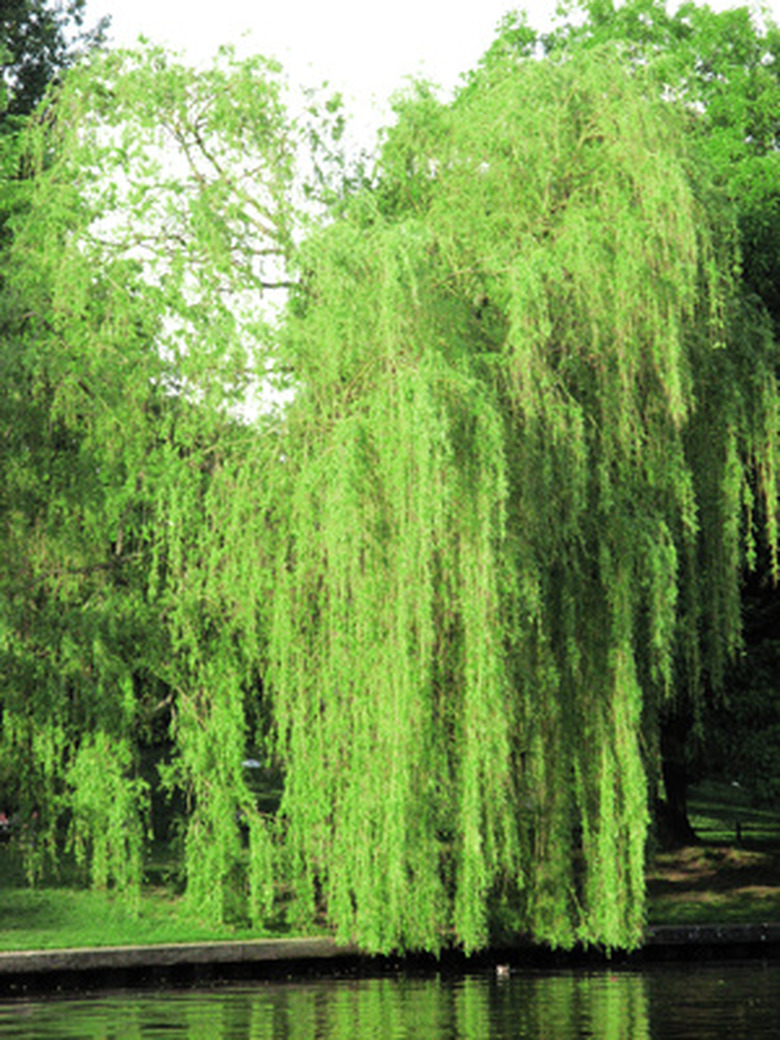How To Grow Weeping Willows In Florida
Things Needed
- Shovel
- Water
- Loppers
Weeping willows (Salix) belong in the family Salicaceae, which is a large family with more than 200 species. There are 30 species of willows native to the United States, which are hardy in USDA planting zones 2 through 9. Weeping willows are suitable for growing in the northern and central regions of Florida, encompassed in USDA planting zones 8 and 9. The tree is characterized by its gracefully drooping canopy falling almost to the ground, making it suitable as a specimen or screening tree. Tolerant to a wide variety of soils, the tree will thrive in Florida's sandy and loam soils.
Step 1
Select an area in your Florida landscape that is large enough to house the tree at maturity. Weeping willows grow quite large rather quickly, reaching a mature height and spread of 45 to 70 feet.
- Weeping willows (Salix) belong in the family Salicaceae, which is a large family with more than 200 species.
- Weeping willows are suitable for growing in the northern and central regions of Florida, encompassed in USDA planting zones 8 and 9.
Step 2
Choose an area in your Florida landscape situated in full to partial sun throughout the day. Weeping willows will grow best if they receive some amount of sunlight during the day.
Step 3
Select an area to plant the weeping willow where the aggressive root system will not interfere with structures, walkways, septic systems or water pipes. The roots grow approximately three times larger than the distance from the tree's trunk to the boundary of the canopy, seeking out water sources. Consider this aggressive growth when choosing a planting site.
Step 4
Plant the weeping willow either next to a pond or in a dry area of your Florida landscape. Weeping willows grow well next to water but are also drought tolerant and will grow quite well in a dry area of the landscape when watered regularly.
- Choose an area in your Florida landscape situated in full to partial sun throughout the day.
- Weeping willows grow well next to water but are also drought tolerant and will grow quite well in a dry area of the landscape when watered regularly.
Step 5
Plant the weeping willow in a hole that is two times larger than the plant's root ball and as deep as the tree's original container. Weeping willows will grow fine in Florida's native soils without amending. Plant the tree at the same depth it was growing in the container, as planting too deep puts undue stress upon the tree.
Step 6
Water the weeping willow weekly with one inch of water, if planting the tree away from a water source. Weeping willows are drought tolerant, but too little water causes the tree to drop its leaves. Trees planted next to a source of water do not require watering as its roots will receive an adequate amount from the nearby water.
Step 7
Prune young weeping willow trees in Florida so they develop a strong trunk structure to help prevent breakage in windy conditions. Prune away multiple branches leaving one main branch as the main trunk. Prune away multiple branches in crotch sections of the tree, making them wide so they will be stronger as the tree matures. Prune away any dead wood.
- Plant the weeping willow in a hole that is two times larger than the plant's root ball and as deep as the tree's original container.
Tip
The weeping willow bark contains salicylic acid, which is the main ingredient in aspirins. Indians chewed the bark to alleviate pain. Bears strip the bark and chew it to rid themselves of pain. Florida receives approximately 54 inches of rainfall each year, according to the Florida Department of Environmental Protection Agency, making for prime growing conditions for weeping willows. Fertilization is not a requirement and pests are generally not a problem. Weeping willow trees are deciduous.
